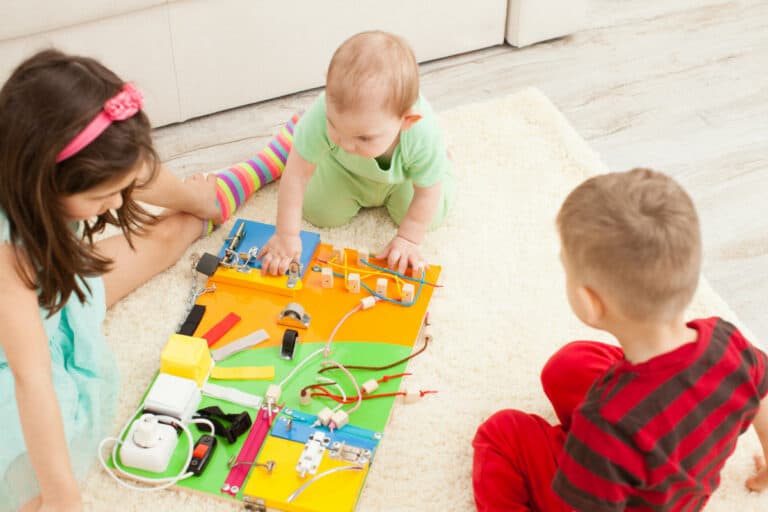Solutions Journalism: News for Families

Parents hold the powerful job of curating news for our kids. But what should we share and how? Read on to learn about the Solutions Journalism Network, an important resource for discussing current events with your family.
Each morning, during COVID-19 homeschooling, we light a candle and say a prayer for those who are sick or working in hospitals, our teachers and those who are lonely and afraid.
Then we watch our elementary school’s daily Morning Messages posted on Facebook. I try to share a bit of world news, showing pictures, and giving highlights on vaccine development and how people are helping and hopeful.
Challenges of Journalism for Families
Each morning, during COVID-19 homeschooling, we light a candle and say a prayer for those who are sick or working in hospitals, our teachers and those who are lonely and afraid.
Then we watch our elementary school’s daily Morning Messages posted on Facebook. I try to share a bit of world news, showing pictures, and giving highlights on vaccine development and how people are helping and hopeful.
But it’s tricky. So much of online journalism is sensational, and hinge on headlines that will guarantee reader clicks. Recent Coronavirus headlines tell of the worst moments and most grim predictions of this crisis. Articles focus on social problems, offering little hope.
Many of us have learned to read stories across multiple reporting sources before we draw conclusions. Some of us ignore journalistic news altogether, opting for podcasts or editorialized updates from friends and family.
We’ve also learned to not read the news before bed or too often. High news intake can produce anxiety and information fatigue.
So as parents, how do we share the news with our kids? How do we lift up the value of good investigative journalism? How do we share news as families?

News Sites for Families
There are some family-friendly news resources. NBC recently began Nightly News for Kids, hosted by Lester Holt, and streamed twice a week. The New York Times has posted a kids’ edition as part of their Sunday paper.
Actor John Krasinski hosts a weekly online show called “Some Good News” in response to the challenges of quarantine. He highlights positive events and spreads good cheer by doing big acts of kindness. He even hosted a virtual prom for high school seniors a few weeks ago.
There’s certainly a need for feel-good news and age-appropriate reporting. Yet these sources don’t always result in constructive journalism.
Solutions Journalism Resource For Families
Solutions Journalism Network (SJN) trains journalists in solutions-centered journalism. SJN approaches news reporting with a focus on the response to the problem, not just the problem.
In addition to training journalists, and supporting organizations producing response-centered stories, SJN maintains a database of stories for use by educators and the media.
One of the missions of the Solutions Journalism Network is to spread these Solution Stories, promoting societal change. Imagine if all of our journalism celebrated the practice of problem-solving, not the problem?
Solutions-Centered Journalism
In order for the Solutions Journalism Network to feature a story in its own database or Story Tracker, it must follow strict criteria. The story must cover the response to a problem and how the response happened. There must be evidence of that response and its impact. The response must produce insight that helps others respond. And, in what may be its most radical feature, an SJN story has to point out the limitations of the response.
These criteria produce engaging stories that lead with the response but describe that response with honest discourse.
“Silver-bullet” responses do not meet the criteria, nor do stories that appear to practice “hero worship.” Solution Storiesreport candidly about the challenges of problem-solving, and the need for collective responsibility if solutions are to be sustainable.
Solutions Journalism Models Problem-Solving for Families
Throughout the day, I find myself saying “Find a solution.” or “Solve your own problem.” to my kids. We’d all agree that our children need to create solutions to small issues in order to build muscles for larger challenges. Yet, many news sources showcase problems, conflict, and division.
Sharing Solutions Journalism Network’s stories with my family instills the practice of response-based news, as well as a response-based living.
As we talk about news as a family, I want to teach my kids, and remind myself, that there ARE solutions to problems. And more often than not, people are responding, together, to find that solution. Can we join them? Can we be those people?

From News to Solutions
When I was growing up, I experienced Network News through a blaring TV at 6 pm. Now, we get our news through earbuds or solo reading on our phone.
As a result, parents are the primary curator of current events for their families. Don’t forget that kids are curious about the world, especially events that directly affect them. COVID-19 has brought world news into our homes and gives us the chance to discuss news events and issues with our families.
Consider taking using a solutions-based approach when talking about news stories with your kids. Mr. Rogers famously said, “Look for the helpers.” Do this. And look for the constructive responses they are finding, for even the really big issues.
With our families, we can celebrate that hope thrives amidst daunting challenges. Instead of just reading the news, we can develop a solutions mindset. Then, together, we can turn that mindset into response-centered living in our own communities.
Explore Solutions Stories on SolutionsU, SJN’s platform that connects you with solutions-based journalism.





